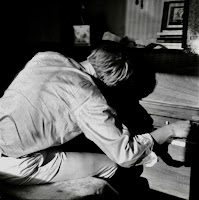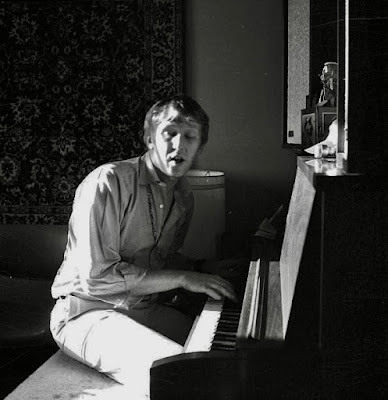jeudi 16 mai 2024
Harry at office 68
mardi 5 octobre 2021
We'll always have Paris
We'll always have Paris
I love that picture. Because a lot of things. Because it's a nice picture, because it's a souvenir picture from Harry's trip in Paris from his promo tour in 1968 (with Peggy March for a French TV show), and also because Harry signed it to a girl who came to interview him in early 1994, just a few days before he died.
Dawn Eden Goldstein's interview
That girl's name is Dawn Eden Goldstein and she worked at that time for RCA when she came to make that interview, the last one of Harry and what it can be a kind of first biography ever made about Harry. Long before the one Alyn Shipton wrote in 2013.
She also got fired from RCA because she had to keep the secret of a compilation they were preparing without saying to Harry, and she could not help doing it. That was even the secret reason for that interview so she could get any personal comments for each song that was planned to be included in the compilation for liner notes.
She recalls that day on the Eric Metaxas Radio Show, how she was the last one to interview Harry and how she got fired by RCA because she disobeyed. How they wanted to have the story behind the songs from Harry's mouth for their Personal Best anthology without telling him anything about the project because they were afraid he wanted to do changes. Nice to hear her all those years later.
https://twitter.com/NilssonArchive/status/1123914094275452928
That's how Dawn Eden tells the story of that photograph:
"When I interviewed Harry Nilsson on January 7, 1994, he showed me the manuscript of his memoir. In it was this photo; I gasped as I'd never seen it and it was so lovely. He promptly tore it out and signed it to me.
Eight days later, he died. His last autograph?
The original is now in the possession of Arabella Luna Friedland, as I gave it to her late father Jim to give him something to smile about in his illness. (Not that Jim needed reasons to smile; he was a joyful man)"
(Dawn Eden quote)
From the Goldmine article about the Personal Best anthology:
At the time of the Goldmine interview, RCA was insistent upon a two-disc set, and was not receptive to Nilsson's track sequence or his title. The label's seeming indifference to Nilsson's wishes hurt him deeply. "They don't understand," he said, sounding pained."I only have three albums left in me, period. This is the twilight of my career. I have one shot left. That's to do this album I'm doing ... and two more, hopefully ... and this (three-disc) compilation to explain who I am to the listening public, because they've never put it all together.
This is my opportunity to put it all together, the way I sequenced it. My list. Schindler's list. And I'm telling you, it breaks my heart, and it's already 20 percent dead, okay? It's breaking my heart to have to go through this nonsense.
I went through this when I was a boy, I went through this when I was a man, with RCA doing things like that. Just once, I would like them just to bend. One time. One time!"
The paper from Harry’s hand as he quick think of a few songs coming to his mind in a restaurant while talking about that subject with Bob Borgen.
Part of a list from Chill’n’Shivr as we can imagine from Bob Borgen souvenirs and papers he kept from Harry’s hand.
Actually, we have two different things here. On the one hand, there is that list Harry wrote one night and gave to his friend Bob Borgen (above).
Dawn Eden's story on the page Nilsson: the true one
Dawn Eden tv interview on Chill'n'ShivrChill'n'Shivr pageThe entire article as printed on Goldmine - 29 April 1994 (reproduced by Bruce Ansley):
One Last Touch of Nilsson - Goldmine article
On January 7, 1994, when I met Harry to interview him for my liner notes to Personal Best, he took me to a sushi restaurant where, as we waited for our order, he brought out a binder containing the manuscript of his memoir.
"Oh, wow," I marveled. "Oh, wow. I've never seen this photo anywhere. That is a _beautiful_ photo of you."
As you can see, Harry signed the photo with a beautiful message and even put the year by his name. For all I know, it may have been the last photo he ever signed.
That was but one act of generosity by Harry that continues to bring joy today.
vendredi 9 juillet 2021
Nilsson: the true one
The True One
Promo box The True One for promo release of Pandemonium Shadow Show album in October 1967 sent to radio DJ and music press with informations and goodies like press-photos, poster, badge, stickers, balloons, letters, fan-club card... and a copy of the album






































































